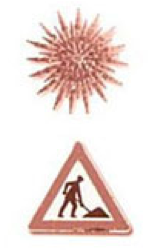Maybe you already know the videos by Fisch & McLeod or by RSA Animate on Ken Robinson; they are both also prime examples for different visualisation techniques for different content.
It seems that something has changed, that something needs to be changed.
What?
Torsten Meyer on medium, media, culture and technology:
“(…) the way of understanding »media« and »medium« which is used here is more comprehensive and at the same time more abstract. It is not a scientifically clean, for example media-theoretically clear term but rather an attempt (…) at grasping also in the sense of sociology and cultural theory: »new medium« – singular – must be understood (at least) by a double meaning. On the one hand, »medium« must be interpreted in a very abstract, system-theoretical way as a set of conditions of cognitive, communicative, and social processing, as a system of the points of reference of the reflexivity of social ways of acting which have been achieved due to communicative experience – in short: as a culture. On the other hand – who dis- cusses questions of depicting and the possibility to depict – in other words: aesthetics – will easily agree with this – these communicative experiences must be thought by their dependency on the respective means of depicting, the communicative and com- munional means and communicators – commonly called »media« (plural).”
– Torsten Meyer (2007), “Education Within a New Medium. An Introduction.”
Texts to read:
Meyer, Torsten: “Education within a New Medium.” In Education Within a New Medium. Edited by Torsten Meyer et al., 264-271, Münster/New York/München/Berlin: Waxmann, 2007.
Schwalbe, Christina: “Change of Media, Change of Scholarship, Change of University: Transition from the Graphosphere to a Digital Mediosphere.” In Mashup Cultures. Edited by Stefan Sonvilla-Weiss, 178-188, Wien/New York: Springer 2010.
Proposed Tasks, choose one ore more questions to work on:
- Are there aspects in the texts of Schwalbe or Meyer you think would be interesting to discuss? Which one?
- Find (or invent) a symbolic representation – or “visual leitmotif”, as Torsten Meyer would call it – that would fit best our current media-centered culture, or that would represent best its most dominant aspects.
- Can you imagine a culture that has taken a different path to communication, of archiving and inter-generational transmission of knowledge than ours? How could a ‘school’ and its curriculum it look like?
(E.g. with face-to-face-roleplaying or photography as culturally leading, dominant medium) - Does a networked, digital medium differ from other media like radio, print, TV etc., and if so, how?




Both videos state clearly the problem of how to give useful education to pupils that will in future have various jobs and even jobs that don´t exist while still in school – how to prepare them for future. Both also state the identity guestion, how we on one hand are all interconnected in the times of globalization, and still have also the national cultural identities.
Both point out the inequality there´s always existed when it comes to access to knowledge -some on our planet have it, some don´t, like on RSA´s animation it´s pointed out that there´s been the divide between academic and non-academic people-with the assumption to smartness that is achieved trough education..
Both videos bring out the reality people are living now, the time of huge info-stimulation, huge amounts of text and email and all kinds of messages transmitted + entertainment used..in RSA it is even more cleverly assumed that ADHD is linked to this reality and the conflict of the stuff kids are supposed to learn at school-by sitting still in class room, learning contents they don´t find useful at all, being in factory like setting, where everyone is supposed to learn the same way, the same thing that then are tested – there is no room for variation in system that emphasizes conformity.
I like how the RSA animation explaines the relationship to current education system and arts, what is mean by aesthetic experience, as a state of great openess of all senses. It also explaines what is divergent thinking and its relationship to creativity – to me being able to use divergent thinking would bring to mind the problem of depression, how a person in that stage has a very narrow thinking, where there doesn´t seam to be many alternatives, only dead ends…so RSA takes the challenges of the future of education much further: how can we teach people into divergent thinking and to promote common intelligence-group sourced knowledge building?
All in all, RSA is so much better than the other video, because of the more comprehensible visualization, it´s more fun to watch, because of the good voice and story = easier to remember, easier to comment.
I share your sentiments about the RSA video – it is a piece of art in itself, and a beautiful didactic method to visually support a complex topic. But I dare say that a commercial production of this kind of video would easily reach a lower to middle five-digit sum in Euros… ;)
And one has to be careful: You already mentioned that too much interpretative freedom may be strenous, and be connected to information overload.
In a specific way, if you notice that “there is no room for variation in system that emphasizes conformity”, in conformity lies security, for the teacher, for the pupil, for the system.
Unfortunately, we have to have both: Freedom of interpretation and security of rules – the trick is, how to modify or generate rules, that are *shareable* with others (otherwise you end up like Peter Bichsel’s ‘old man’ in “A table is a table”).
So, one of our concerns is to turn the general stuff taught in school into something exciting, applicable and personally relevant for each children (Ertmer and Newby, as well as Bateson wrote about this), the other is, how can we do this in a collaborative way.
Let’s start small, and try to draft a little curriculum for a specific topic – maybe you already have some ideas?
One of the main paradoxes of schooling is the official requirement to on the one side compete with your classmates (no mutual help during tests, e.g.), on the other hand to be social, communicative and helpful. This is, from my POV, a classical double bind for the pupil…
(http://en.wikipedia.org/wiki/Double_bind#Examples). Somehow he or she manages to cope with this (as in the surprising age-of-the-captain-problem), but there may always be a moment of social disorientation left, later on.
How can we hint on this hidden problem, for example?